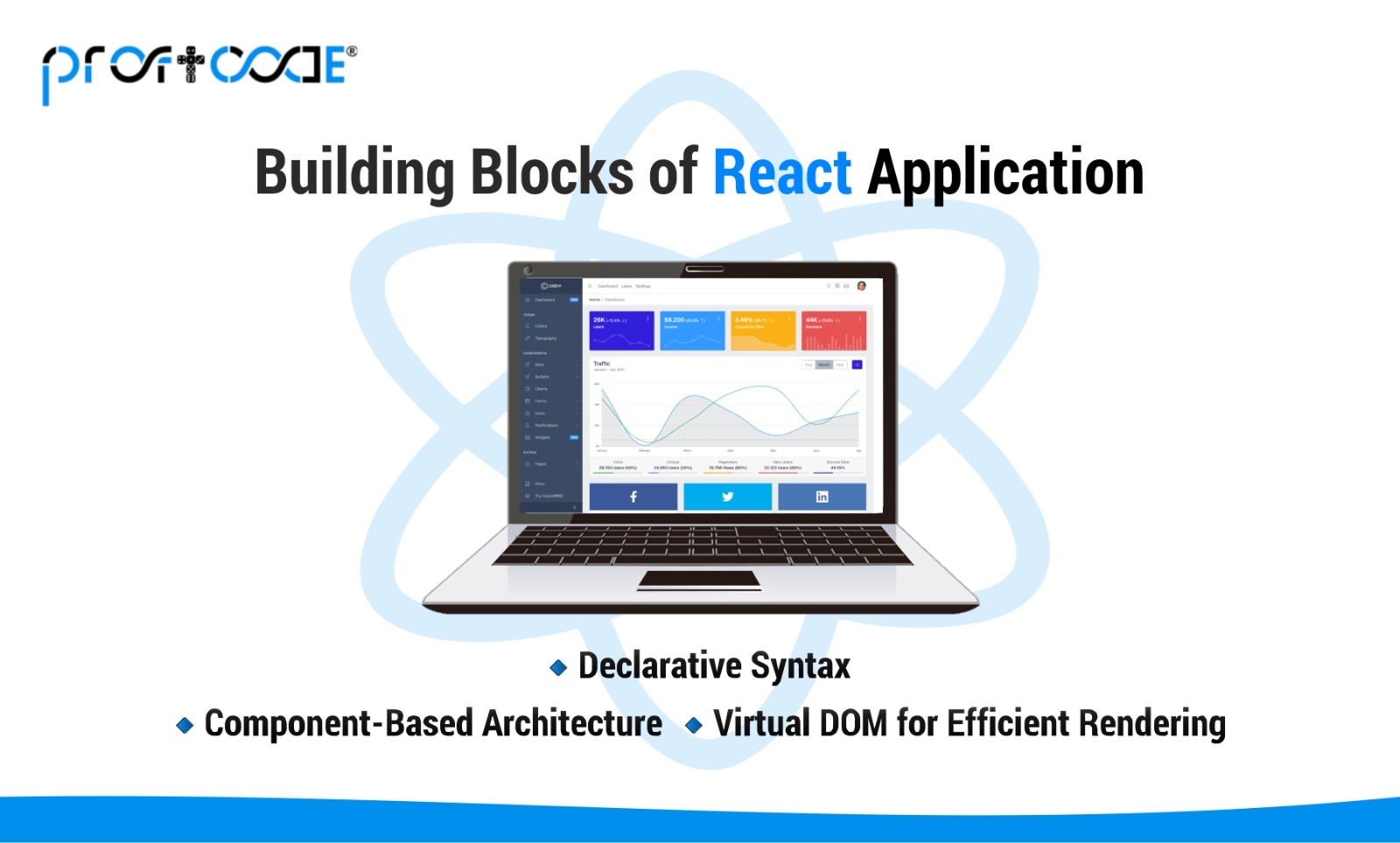What is React.js?
Prem Mourya
16-Feb-2024

Category : Web Development
What is React.js?
React.js
is an efficient, and flexible JavaScript library for building user interfaces.
Its primary goal is to simplify the process of building UI components, making
it more manageable and scalable. React is particularly popular for single-page
applications where user interactions and responsiveness are crucial.
Key Characteristics of React.js
1. Declarative Syntax: React adopts a declarative
programming style, where developers describe what they want to achieve, and
React takes care of the how.
2. Component-Based Architecture: React follows a
component-based architecture, breaking down the UI into reusable and
self-contained components. This modular approach simplifies development,
encourages code reusability, and enhances collaboration.
3. Virtual DOM for Efficient Rendering: React utilizes a
Virtual DOM to optimize the rendering process. By creating a lightweight
representation of the actual DOM in memory, React can efficiently update and
render only the necessary components, minimizing performance overhead.
Advantages and Considerations
Advantages of React.js
1. Reusability and Componentization: React's
component-based architecture promotes code reusability, allowing components to
be reused across different parts of the application.
2. Virtual DOM for Efficient Rendering: The Virtual DOM
minimizes the performance impact of frequent UI updates, resulting in faster
rendering and a smoother user experience.
3. Strong Community and Ecosystem: React has a vast and
active community, leading to the creation of numerous libraries, tools, and
resources that complement React and enhance its capabilities.
4. SEO-Friendly Single-Page Applications: React's ability to
render on the server side makes it SEO-friendly, ensuring content is crawlable
and indexable by search engines.
5. Backed by Facebook and Instagram: As an open-source
project maintained by Facebook, React benefits from continuous improvement,
updates, and contributions from a team of experienced developers.
Considerations and Challenges
1. Learning Curve for Beginners: React's
component-based approach and JSX syntax may pose a learning curve for
beginners. Understanding concepts like state, props, and lifecycle methods
requires time and practice.
2. Tooling Complexity: Managing state, routing, and
global state with tools like Redux can introduce additional complexity as
applications scale. Developers need to carefully choose and configure tools
based on project requirements.
3. SEO Requires Server-Side Rendering: While React is
SEO-friendly, achieving optimal SEO performance may require implementing
Server-Side Rendering (SSR) for content-heavy applications. This adds
complexity to the server-side setup.
Conclusion:
In
conclusion, React.js has become a cornerstone in modern web development. Its
declarative syntax, component-based architecture, and efficient rendering make
it a preferred choice for developers and businesses alike. Whether you're
building a small project or a large-scale application, mastering React opens
doors to a world of possibilities in creating robust and interactive user
interfaces.














